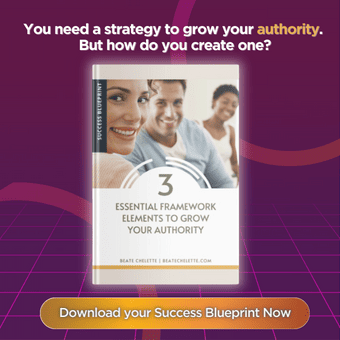Most of us were drawn to the world of entrepreneurship because we crave creative freedom to make our visions realities. Our innate preference is to focus on ideas, change the world, and make life more interesting.
Truly, a world without art would be an awful place. Imagine—no beautiful paintings, illustrations, and sculptures to inspire our own ideas, and no music to fill our hearts with a gamut of emotions that make us feel something.
Today I am going to tell you about another side of creativity that you may not have considered before or keep neglecting.
Without creativity there would be no new ideas, innovations would come to a halt, and each day would feel like the day before. While some people find comfort in routine and predictability, we creative folks have surely all experienced the frustration of something not working right and exclaiming loudly, “There has to be a better way!” In essence, this is why most large organizations struggle to reconcile their processes and structures with making room for creativity within those parameters. No easy feat.
We creatives have lofty goals, to be sure. Yet most creative entrepreneurs I know unwittingly make these mistakes over and over:
- Talking only about themselves and saying nothing about the customer. It mystifies me when I read your bio on your website or LinkedIn and all you tell me is how passionate you are about what you do. Well, it’s wonderful you have passion—but you don’t need to tell us. It’s a basic assumption that a person is passionate about the industry they decided to be a part of. So then, WHY are you so passionate about it? Because it makes your clients happy, helps them feel better, inspires them or solves their problem. Nobody wants to work with a narcissist. So stop sounding like one immediately!
- Believing your idea or your creation is what your client wants to talk about. The only thing your customer wants to know is what is in it for them. How can you make them look better, perform better, or inspire them?
- Not planning for growth. It’s truly a catch-22. You can’t afford to hire anyone yet, but if you don’t get help you’ll kill yourself with all the work to be done. Already we are working 14-hour days and it doesn’t seem to be enough. That’s because you alone are trying to do the work of four people. There are a finite number of hours in each day and some of those must be slept through. Therefore, growth is only possible when you add people.
- Not having access to money. Sometimes you need a line of credit to get you through a seasonal slow period or to fulfill a large order. Always ask for money when you don’t need any. When you have available funds, banks seem to want to throw more credit at you. But when you need money because your income streams are a little dry, nobody will give you any. Another catch-22.
- Not setting boundaries. My best advice is to separate your personal and business affairs. Again and again I see small business owners confide to their employees about their relationships or problems at home (a mistake I used to make). You are the leader of your company and you must diligently focus on being in that role. Talk about personal issues with family and friends or a professional confidant. By letting colleagues in to your personal life, you reveal vulnerabilities that can too easily be exploited.
I hope you find these tips helpful. Please let me know any questions you have about running your creative business. I am here to help!






Helpful always and great reminders on the things we may mean to get to, but haven’t yet.